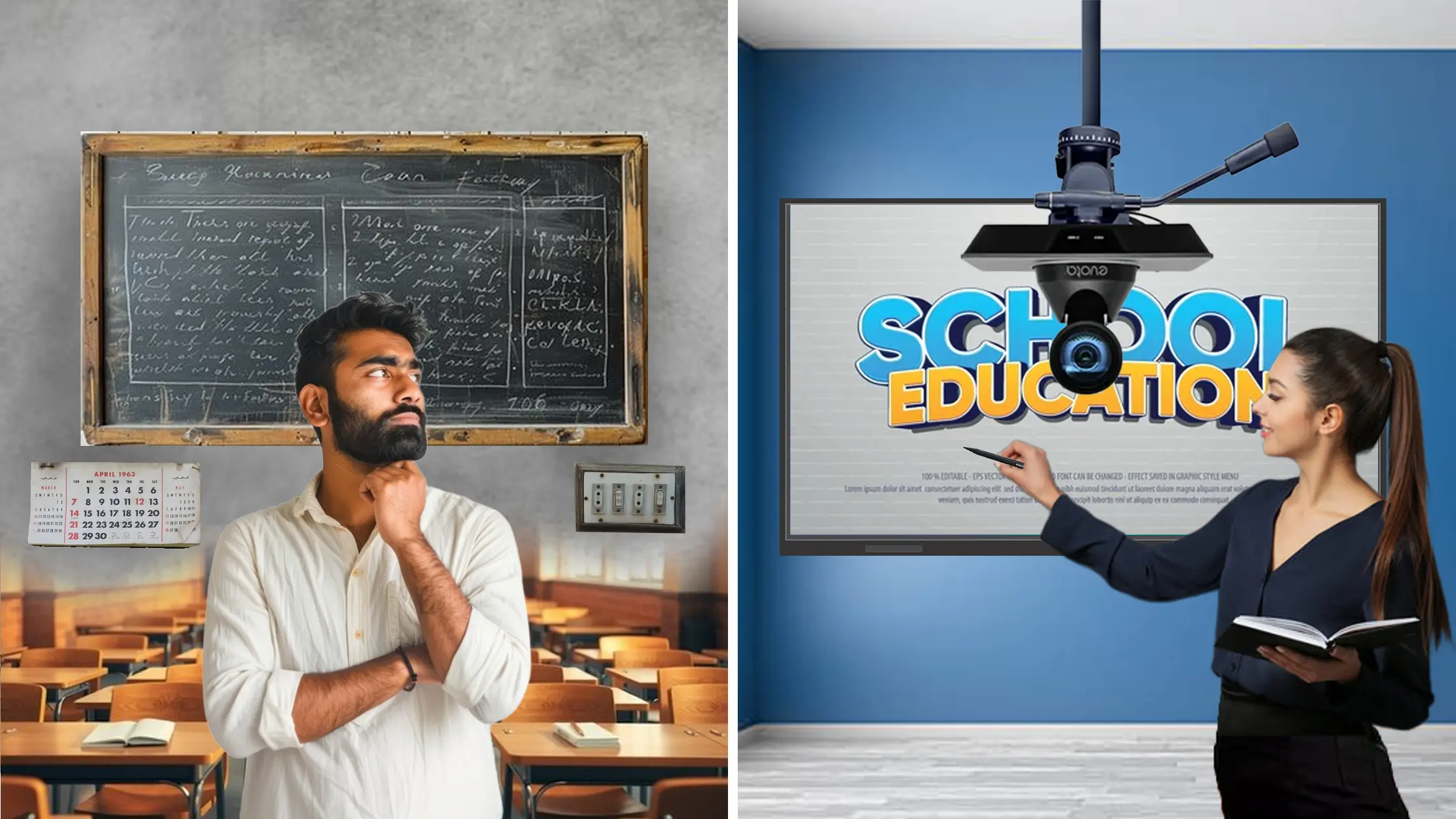
The classroom of today is almost unrecognizable compared to what it was just a few decades ago. From dusty chalkboards to immersive digital learning environments, the evolution of classroom technology has transformed how students learn and how teachers instruct. As we move further into the digital age, understanding this transformation highlights the importance of technology in shaping modern education.
1. The Early Years: Chalkboards and Overhead Projectors
In the early 20th century, the classroom was a simple space equipped with a chalkboard, textbooks, and paper. Chalkboards were the primary visual aid, allowing teachers to illustrate concepts while keeping students focused. The introduction of overhead projectors in the 1960s and 70s was a major leap, allowing educators to display printed transparencies to the entire class.
Key Technologies:
Chalkboards
Overhead projectors
Slide projectors
Film reels
2. The Computer Revolution: Introducing PCs in the Classroom
By the 1980s and 1990s, personal computers (PCs) began making their way into schools. Basic programming classes and typing lessons became part of the curriculum. Computer labs were introduced, giving students hands-on experience with software and early internet browsing.
Key Technologies:
Desktop computers
Floppy disks & CD-ROMs
Basic educational software (e.g., typing tutors)
Early internet use (dial-up access)
3. The Rise of the Internet and Multimedia Learning
The 2000s saw a significant shift with the widespread availability of the Internet in schools. Digital resources, online research, and multimedia tools became mainstream. Teachers could now incorporate videos, animations, and simulations into their lessons to cater to different learning styles.
Key Technologies:
Broadband internet
Multimedia projectors
Smart boards (interactive whiteboards)
Educational websites and e-learning platforms
4. Mobile Devices and Interactive Learning (2010s)
With the rise of tablets, smartphones, and mobile apps, the classroom became more interactive and student-centered. Learning Management Systems (LMS) like Google Classroom and Moodle enabled teachers to assign homework, provide feedback, and manage content online. Interactive flat panels began replacing traditional projectors and smart boards.
Key Technologies:
Tablets and iPads
Interactive flat panel displays
Cloud-based LMS platforms
Educational apps and gamified learning
5. The Post-Pandemic Shift to Hybrid and Remote Learning (2020–2022)
The COVID-19 pandemic caused a global education shift toward remote and hybrid learning models. Schools rapidly adopted video conferencing tools and digital collaboration platforms. While challenging, this phase significantly accelerated the adoption of classroom technology.
Key Technologies:
Zoom, Microsoft Teams, Google Meet
Cloud storage (Google Drive, OneDrive)
Digital whiteboards
Virtual classrooms and online assessments
6. Modern Classrooms in 2025: Immersive, Data-Driven, and Personalized
Today, classrooms in 2025 are increasingly intelligent, immersive, and personalized. Technologies like Artificial Intelligence (AI), Augmented Reality (AR), Virtual Reality (VR), and data analytics are integrated into the learning process. Teachers use AI-powered tools to track student progress, while students engage with immersive content using AR/VR headsets.
Key Technologies:
AI-driven learning platforms
AR/VR for immersive education
Interactive flat panel displays (IFPDs)
Real-time data analytics for performance tracking
Personalized and adaptive learning software
Embracing the Future of Learning
The evolution of classroom technology reflects a broader shift in educational philosophy—from passive reception to active, student-centered learning. As technology continues to advance, classrooms will become more collaborative, personalized, and inclusive, ensuring better engagement and outcomes for learners of all ages.
Embracing this evolution is not just about keeping up with trends—it’s about creating empowered learners and forward-thinking educators.
Your email address will not be published. Required fields are marked *

By Inhype • December 11, 2025
Introduction Remedial teaching is a crucial educational approach designed to help students who lag behind in specific subjects or essential skills.
Read More
By Inhype • December 11, 2025
Introduction Every classroom in India has learners with varied learning speeds and abilities. Some students grasp concepts quickly, while others ne
Read More
By Inhype • December 10, 2025
The landscape of education in India is changing rapidly. With schools, coaching centres and universities moving toward technology-driven learning, one
Read More.svg)
By Inhype • November 10, 2025
A New Chapter in Indian Education India’s education system is evolving faster than ever before. Traditional teaching tools are giving way to inte
Read More
By Inhype • July 19, 2025
Empowering Classrooms with Audio-Visual Innovation
Read More
No comments yet. Be the first to comment!